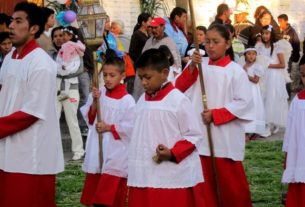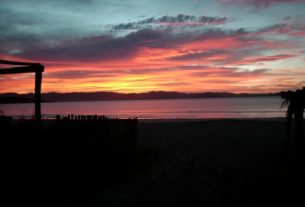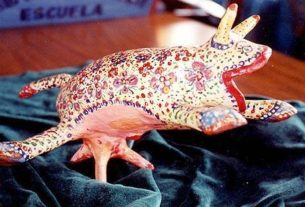Rebels, we know, can range from wild-eyed anarchists to sober and judicious opponents of an established order who make a considered decision that the system under which they live is no longer viable.
If there ever was a “law-and-order” rebel, it was Ignacio de Allende y Unzaga. Where many who rose against the Spanish crown were oppressed Indians, down-and-out workers and exploited peasant-farmers, Allende derived his ideas from philosophical speculation and observation of political trends.
Allende was born in 1779 into a milieu that was decidedly privileged. His father, Domingo Narciso de Allende, was a wealthy Spanish landowner. The place of his birth was San Miguel el Grande, a mountain community in Guanajuato known for both its spectacular scenery and the beauty of its colonial architecture. Today this town is called San Miguel de Allende, in honor of its illustrious son.
Deciding on a military career, the young man was commissioned a lieutenant in the Queen’s Militia in 1802. He married in the same year but tragedy overtook him when his wife died young. Allende’s first posting was in San Luis Potosí under the Spanish general Calleja, who would become his most formidable opponent during the Independence War. In 1807 he was transferred for a tour of duty in Mexico City. In 1809, the year before the independence movement was launched, he was back in his home town, serving as a captain in the Queen’s Militia.
With such a background, one may well wonder why Allende ever chose to become a rebel. To arrive at an explanation, one must consider the climate of the times. In 1808 Napoleon forced King Ferdinand VII of Spain to abdicate and installed his brother Joseph on the Spanish throne. This action set off the Peninsular War in Spain, where the British aided partisans of Ferdinand in a rebellion against Joseph and his supporters. Among such conservative creoles as Allende and his family, there was enormous outrage and — more important — a movement to declare Mexico independent until such a time as Ferdinand could be restored to the throne.
This concept of temporary independence gradually evolved into one of permanent independence from whoever ruled in Spain — be it Joseph Bonaparte or be it the dynasty he replaced. Allende was so strongly moved by this spirit that, on the eve of the Independence War, he strode through barracks impulsively chalking this message on the walls: “Independence! you cowardly creoles!”
Then there was another contributing factor to Allende’s intellectual development. Throughout Mexico educated creoles had organized literary circles that discussed the works of such writers as Voltaire, Rousseau and Descartes — all banned by the Church. Allende headed one of these groups in Querétaro and its members ranged from cautious supporters of reform (like Allende) to advocates of far-reaching social change. But all agreed on one point: get rid of the Spaniards! Therefore, it wasn’t long before the literary circles became circles of political action.
Also active in this literary-political ferment was a more radical reformer, Father Miguel Hidalgo y Costilla. Though Hidalgo was in holy orders, he was a worldly cleric who had fathered children and read all the forbidden books of the secular philosophers. Far more so than Allende, he championed the rights of Indians and of the poor.
The differences between the two men were highlighted when the armed struggle for independence began. Where Allende favored an uprising that would observe the rules of civilized warfare and respect the lands and property of rich creoles, Hidalgo, whether he wanted to or not, found himself leading a violent and disorganized movement that resembled the 14th century peasant rebellions of the jacquerie in France and Wat Tyler in England.
The armed struggle against Spain began in mid-September of 1810, with Hidalgo’s famous grito (“shout”) in the small town of Dolores, today known as Dolores Hidalgo. (Contrary to popular belief, Hidalgo did not proclaim total independence for Mexico but only independence from the Napoleonic regime in Spain.)
By the end of the year, differences between Hidalgo and Allende were posing a serious threat to the unity of the rebel movement. When Hidalgo’s peasant and Indian followers ransacked the houses of gachupines (as the Spaniards were known) and rich creoles, Allende tried to deter the rioters with his sword.
Allende, a professional soldier, was also in despair over Hidalgo’s military bungling. The priestly humanitarian was no strategist and he infuriated Allende by making error after error. After winning a victory on October 30, 1810, it seemed as if Hidalgo had Mexico City in his grasp. But, to Allende’s discomfiture, he inexplicably turned back and established himself and his command at Guadalajara. In January 1811, against Allende’s advice, he concentrated all his forces near Calderon bridge, at the city’s eastern outskirts. There they were butchered by Calleja, the able Spanish general who had once been Allende’s commanding officer.
Calleja’s forces occupied Guadalajara but Hidalgo managed to escape. He made his way north, to Zacatecas, but there learned that a group of officers led by Allende had staged what amounted to a coup. Allende was placed in charge of all military forces and Hidalgo was demoted from overall leader of the rebellion to civilian chief in charge of political affairs.
With Hidalgo in his new role, the reduced rebel force moved north, hoping to obtain assistance from the United States. In July 1811, at Acatita de Bajan in Coahuila, the Hidalgo-Allende detachment was treacherously ambushed by Ignacio Elizonda, a Benedict Arnold figure who had been a rebel leader but then gone over to the Spaniards. Allende and Hidalgo were taken prisoner and marched over hot desert sands to Chihuahua. There, after a drumhead court martial, Allende was executed on August 1. Hidalgo, after being defrocked by the local bishop, was shot two days earlier.
There is an interesting similarity between the Allende-Hidalgo relationship and the main contending factions in the French Revolution. Where Allende, with his respect for order and gradualist views, resembled the moderate Girondins, Hidalgo was definitely in the tradition of the radical Jacobins.



